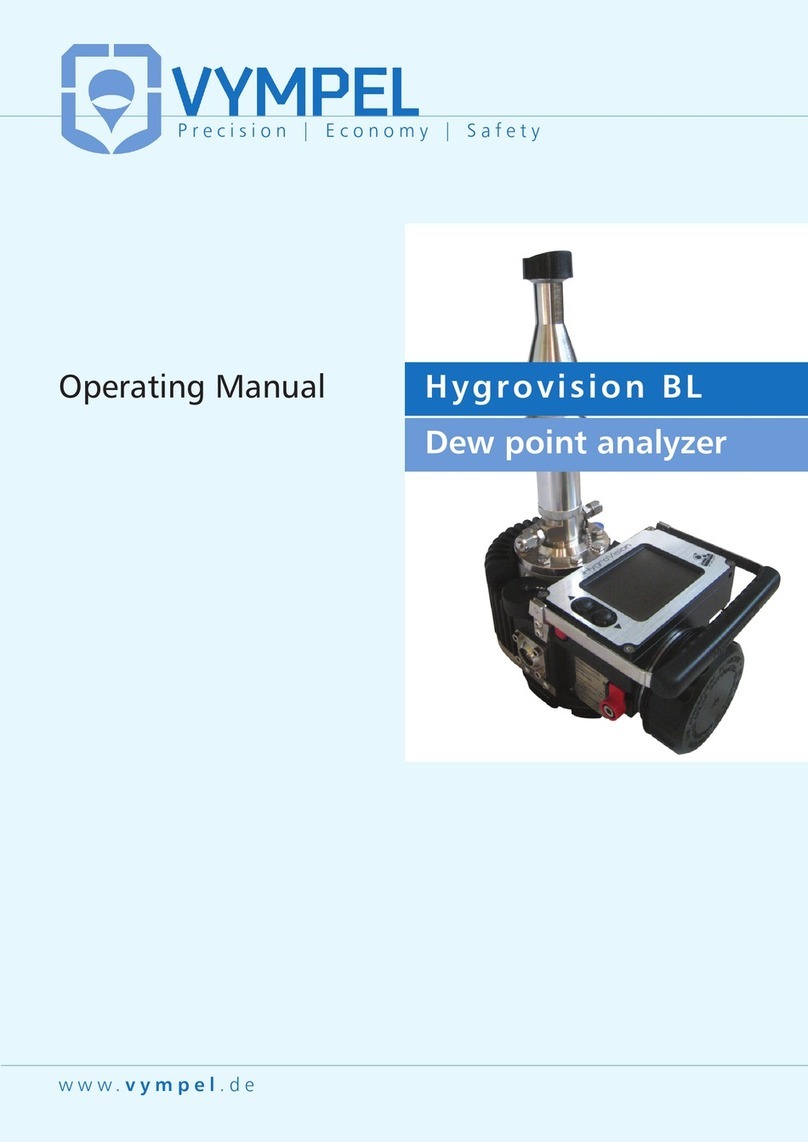This handbook provides a description of the construction and functional principle of the
“Cong Prima 2M” dew point analyzer (also referred to as the CP 2M, transducer, analyzer or
DPA).
The CP 2M is a through-flow automatic hygrometer. It takes direct measurements with the
aid of a thermostatically controlled mirror. Dew point (dp) is established by monitoring the
reflectivity of the mirror. As the temperature of the mirror is lowered, the surface becomes
less reflective due to the formation of condensation. The temperature at which condensation
occurs is the dew point.
1 Description of the CP 2M
1.1 Intended use of the CP 2M
!
The CP2M is designed to automatically measure the dew point of water (dpW) and the dew
point of hydrocarbons (dpHC) at gas measuring facilities. It is also suitable for use in various
operations and procedures where gas quality must be monitored.
The analyzer can measure the dew point of hydrocarbons when the gas being examined
is free of water vapor that would condense at a higher temperature than that of hydrocarbons.
The analyzer can measure the dew point of water without regard to hydrocarbon
condensation temperature.
1.2 Measurement principle
!
The CP 2M makes use of the “total refraction” effect to determine the dpW.
Total refraction occurs when polarized light, with a particular orientation, passes through the
interface between a heterogeneous media (gas) and a reflective surface (thermostatically
controlled mirror) at a specific angle of incidence know as Brewster’s Angle.
When total refraction occurs no light is reflected.
The analyzer uses a laser as a source of polarized light.
The reflective surface is a dielectric condensation mirror made of silicone.
When the mirror is clean, that is when no condensation is present, as the beam of light from
the laser encounters the gas/mirror interface it is completely refracted. As a result, no light is
reflected onto the photo detector, which therefore registers a null signal.





























